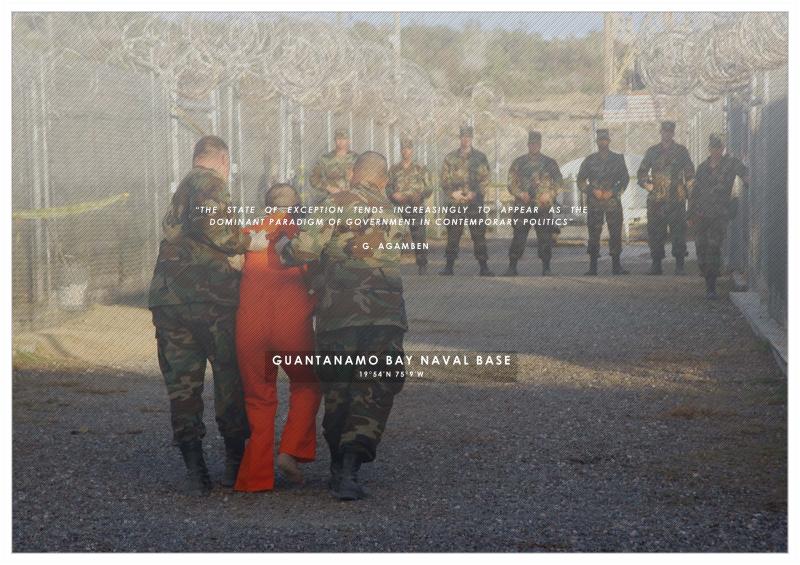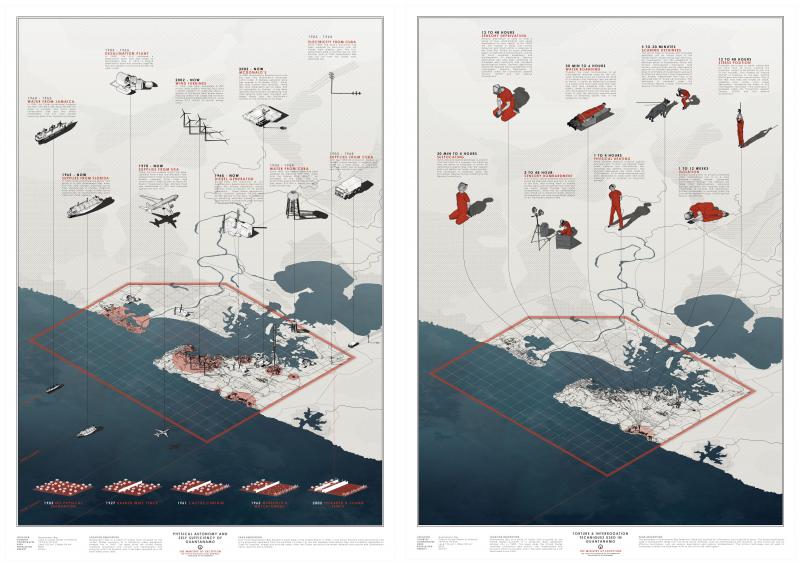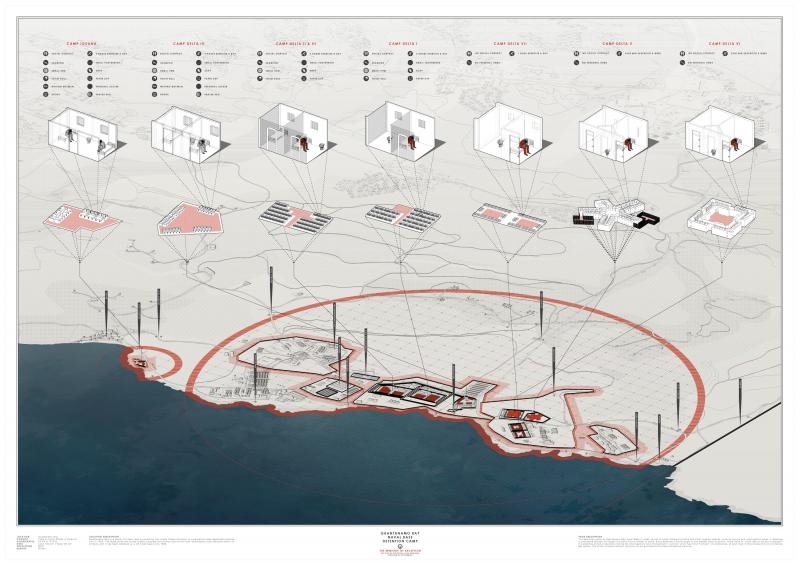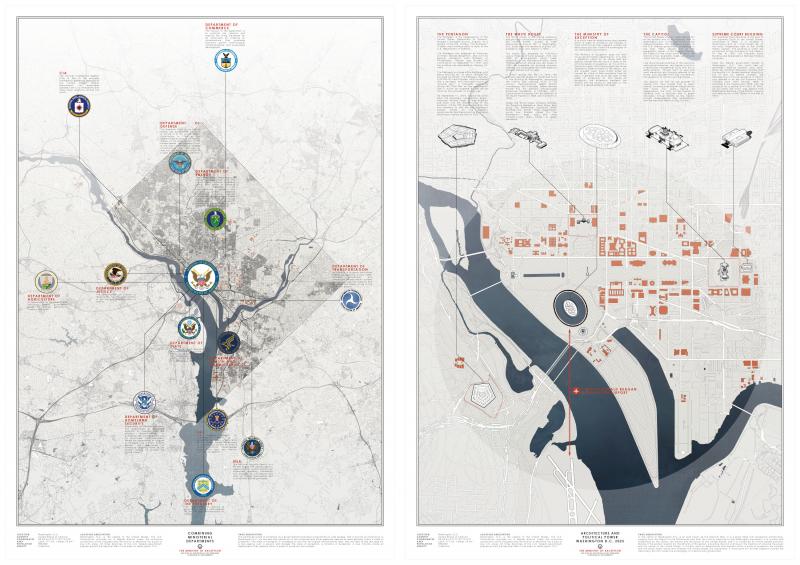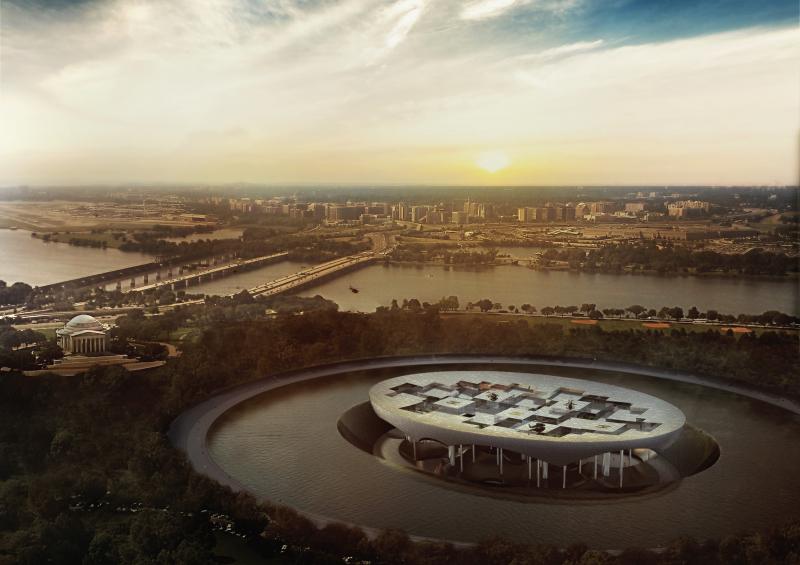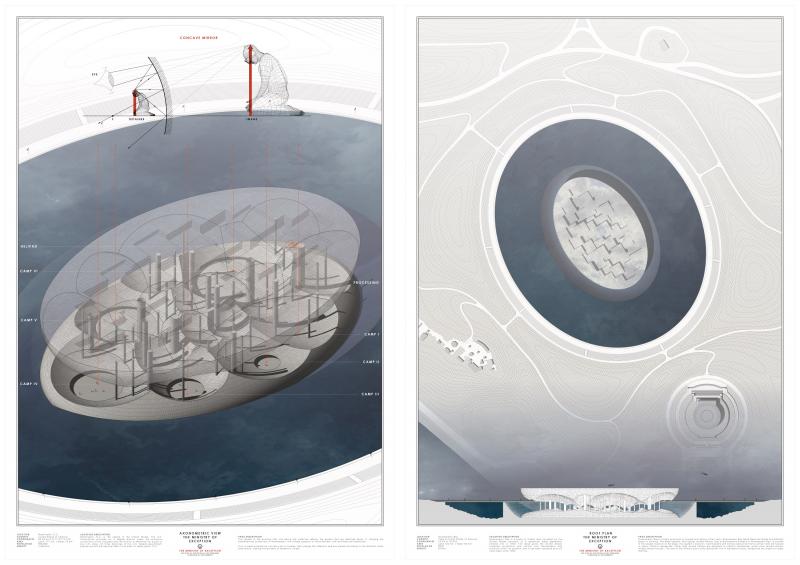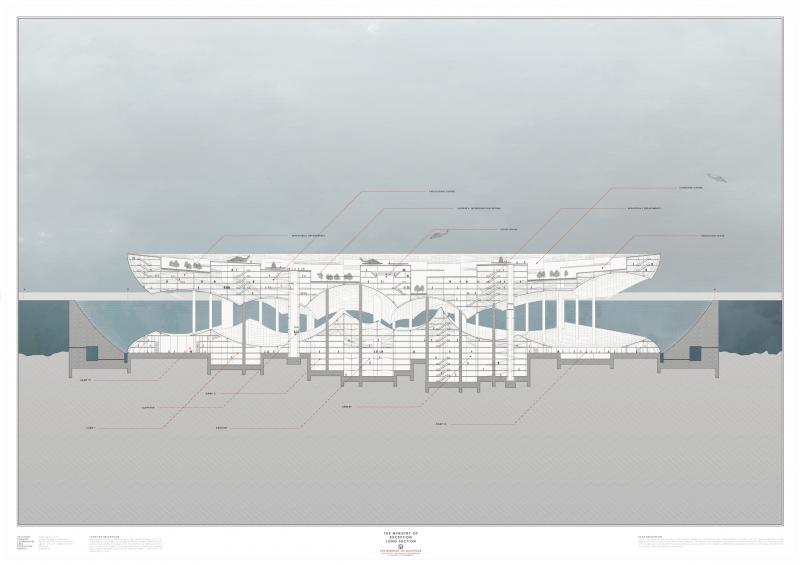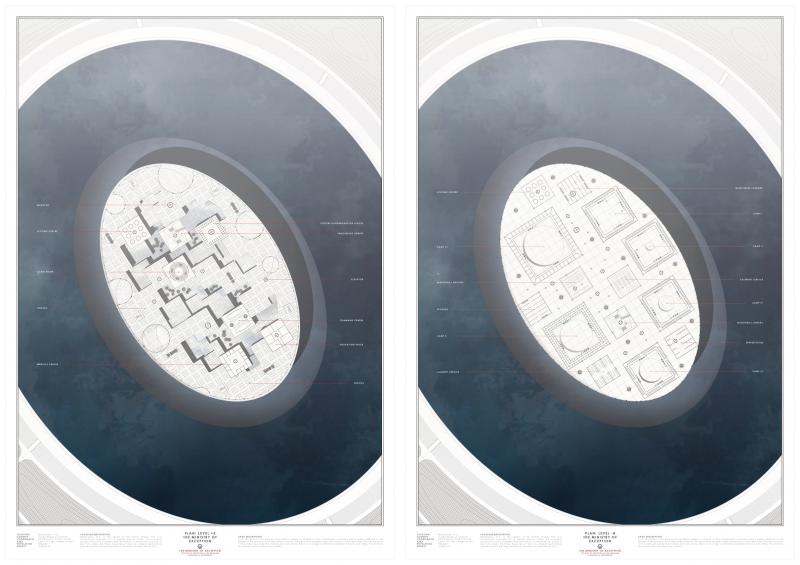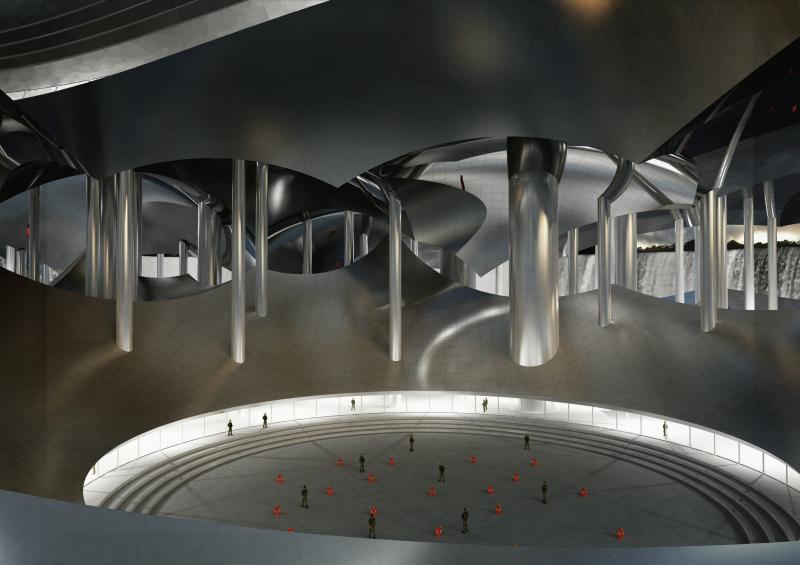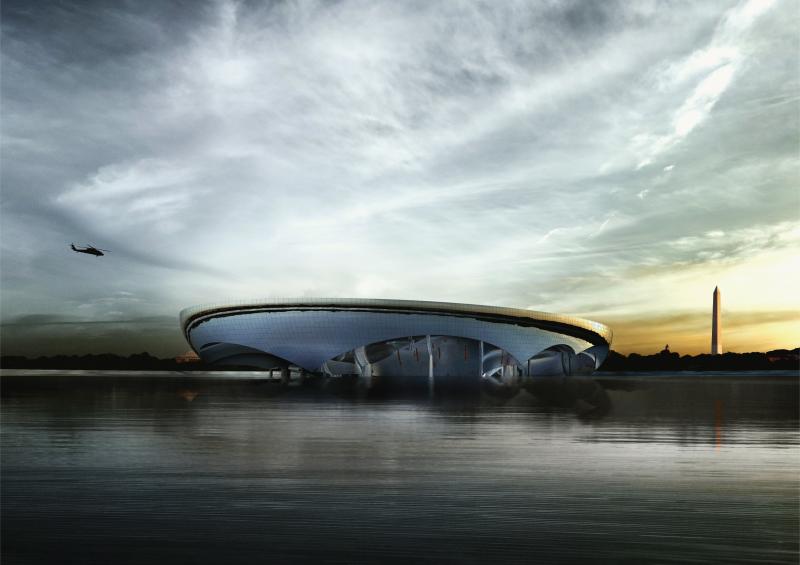Ministry of Exception
The “Ministry of Exception” is a critique on the state of exception as a permanent governmental technique and the subsequent use of torture as a form of propaganda. The building is located in the centre of Washington D.C. and it is a hybrid between a traditional ministry and a detention camp.




